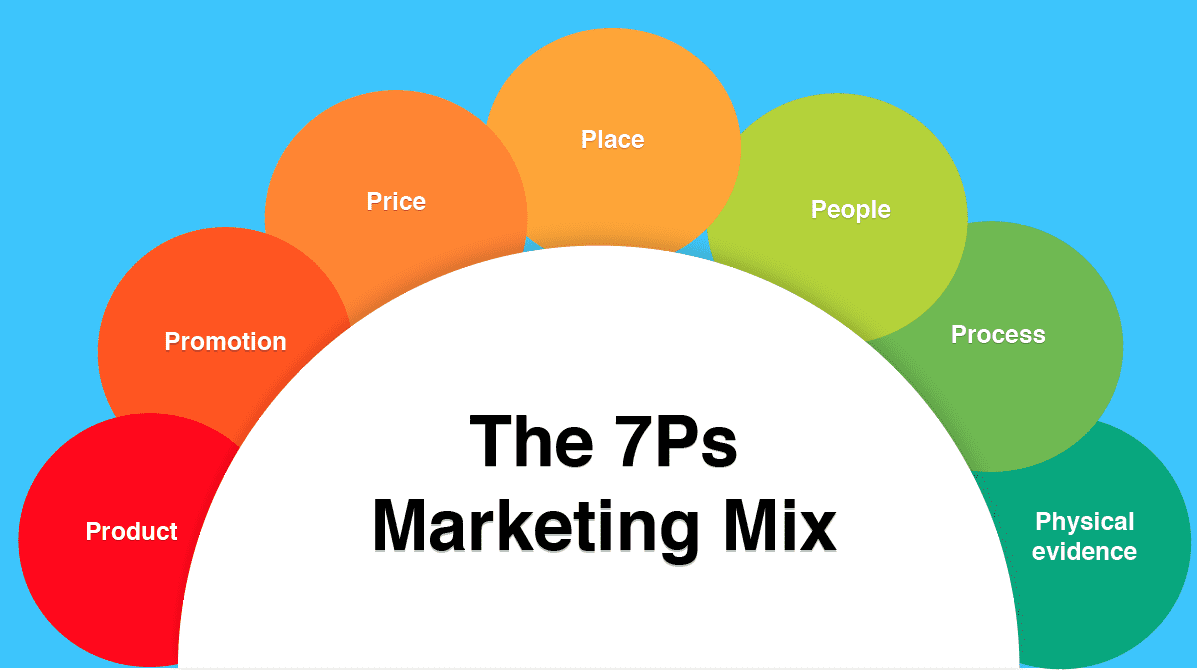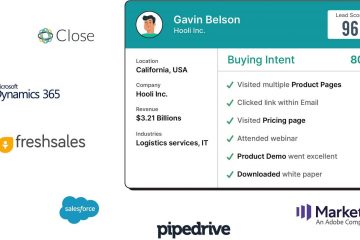The 5 P’s of Marketing
Updated on 6th December, 2023.
Marketing is an ocean of possibilities, and you can pretty much try anything and everything. Numerous strategies, tools, and mediums have emerged for marketing, especially in the digital marketing era. To help get a closed view before working on any marketing plan, experts have come up with a foundational model that goes back as far as the 1940s.

Image Source: mashummollah.com
Marketing Mix – What are the 5 P’s of Marketing?
We have a long road back before getting the P’s in the form we now know of. In 1948, Culliton published an article entitled, The Management of Marketing Costs in which Culliton describes marketers as ‘mixers of ingredients.’ This is straight from Wikipedia. This article inspired his colleague, Professor Neil Borden, to conceptualize ‘marketing mixes.’ Now, what defining attributes should contribute to the marketing mix? E. Jerome McCarthy came up with the 4 P’s model in the 60s, which was later popularized by Phillip Kotler.
These 4 P’s were Product, Place, Price, and Promotion. All of these 4 P’s are things that you should keep in mind when forming any marketing strategy. Then came the fifth P that connects them all, People.
The ‘people’ part is always taken for granted; perhaps this is the reason for its omission from the original Four Ps model. As more marketers started to take behavioral psychology, motivations, biases, and thought processes seriously, the 5 Ps model came into existence. Perhaps, the origin of the 5th P considered societal feelings and cohorts in general. Knowing how a group of people react to certain things is key to marketing a product. ‘People’ also includes your staff—people inside your company as they shape how you grow.
Why are the 5 Ps of Digital Marketing Important?
The biggest benefit that the 5 Ps of marketing offers is to enhance your ability to focus on your main marketing objectives. They achieve this by establishing a framework that guides all of your initiatives, fostering alignment. It is much simpler to identify the areas of your organization that require more assistance once you have established your core pillars.
For instance, if you have trouble selling, you may choose to look into the cost of the products or your ability to reach your target audience. This is what the 5 Ps of marketing do for you. No matter what obstacles your company encounters, fostering goal alignment is backed by a core set of values.
Breaking Down the 5 P’s of Marketing
So, we have Product, Place, Price, Promotion, and People. Some experts also talk about Process and Physical evidence and transform the mix into the 7 Ps. Let’s break them down one by one.
Product
The product is something that you have that serves the needs of the customers. It is tangible (a physical item) or intangible (like digital items or services). Now, we all know that the product is what you are selling and what you have to market. So, the question is, how does it connect to the marketing strategy? You have to assess your product and connect the dots to the needs of customers. Demand can’t be created for a desire that does not exist. If the customer is not aware of what your product does, they will definitely have a need or a desire that your product solves and that you need to connect.
Marketing may also demand a modification of the product or its positioning, a pivot if you will. Or simply an addition of features based on user demand. For example, many Slack users often go to Meet or Zoom for their calls. Slack now provides this in its own app.
This brings more things to the scope of marketing, such as distribution of the product, the context where customers of this product directly think of the product, habits, and how frequently they need to come to your product. We think that’s why the ‘People’ and ‘Positioning’ part is as important as the ‘Product’ in this day and age.
Pricing
Pricing is one of the key determiners of a customer’s decision. Especially if you have accessible competitors, a customer will often vet all options before choosing one. So, a marketing strategy needs you to correctly price your product while not only considering what your customers can pay but also considering what your competitors are charging.
If we look at the determiners for setting a pricing model, they are:
- Internal costs – Costs of manufacturing the product or running the business.
- Competitors – What competitors are charging for the same product
- Accessibility – How accessible are products of competitors?
- Buying power – How much buying power do your customer profile have to pay for your product?
- Market condition – Is the market condition favorable to charge a particular price?
- Model – How are you going to charge for the product? (Lumpsum, Monthly, Annual, etc.)
- Quality – Does the quality you provide match the price you want to charge?
There are also some psychological elements to pricing, and going into them will need a separate article. To provide a quick example, many vendors often use the pricing of a plan to prime users to another plan. For example, if you get 10 packs of chips for $100 and 30 packs of chips for $200, the latter would seem like a greater deal even if you don’t need 30. There are many more strategies that you can read up on. We recommend that you start by reading on Porter’s five force analysis for analyzing the competitive landscape of an industry.
Place/Placement
Both place and placement are used to talk about this second P. It includes both location and placement. Let’s start with location. Where does your target audience reside? If you are targeting a particular geographic area, you are dependent on several things: the population of the area, the buying power of the area, the spending patterns of people in the area. Or, if you are in B2B, you could replace it with the type of company. A prospect in a third-world country will not have the same buying power as the prospect in a first-world country. With digital marketing, the lines have now gotten thinner as you go global, but the geographic properties still need to be kept in mind while marketing.
Coming to placement, where you put your ads matters greatly. Are you putting them in places where your buyer already has intent and searching for something you already offer? (e.g., Search Ads) Or, are you putting them in a place where they are not actively looking for something? (e.g., Display ads)
Which platforms you are placing them at only greatly affects the outcome of your marketing strategy. Different websites, platforms, and communities have different types of buyers, and you need to keep that in mind.
Promotion
Placement and promotion go side by side, and there are some overlaps with what we discussed already. Promotion is how you promote your product.
Do you want to run ad campaigns? Do you want to send outreach emails? Do you want to promote your products in certain groups? Do you want to promote certain websites?
The promotion covers every strategy you use to sell your product, and it is what connects to revenue. Inbound marketing, direct sales, press launches, everything comes in the promotion.
Quick plug, if you want to track how all of your promotions are doing and connect marketing operations with sales, Salespanel can help you. 😉 😉
People
Big brain moment here, people. The amendment to the list that kind of seems obvious but needs to be pointed out anyways. People include both your staff and your customers, and they make your business.
Every marketing strategy needs to consider people – their behavior, their fears, psychosocial elements, and everything that connects a person to the business.
Now, coming to staff, they are your colleagues and employees. Who you hire, what motivates them, how they work, and the overall atmosphere in your company will shape how you grow.
We also cannot forget the importance of positioning as it exists in your audience’s mind. To quote Wikipedia again, “Positioning refers to the place that a brand occupies in the customers’ minds and how it is distinguished from the products of the competitors and different from the concept of brand awareness.”
If you ask your audience to name three popular soap brands, you can guess what they would say. But if you ask the same audience what the top herbal soap brands are then chances are that you will hear different names. That’s positioning!
When it comes to framing your position in your audience’s mind, it will take strategic planning, authentic messaging, and packaging of your product. What is the differentiator that you want to highlight that should be the prime driver of purchasing criteria and retention of existing customers? Are you positioning in a category that is growing?
The 7 P’s of Marketing
Some marketers also include these two to make the 7 P’s.
Process – The process constitutes the delivery of your products and services to your customers. How do you deliver them?
Physical Evidence – What evidence do customers have of your product? Can it be looked at? If digital, do you have a free trial? Do you have testimonials or reviews? What are people saying about your product on review sites or Capterra? Do you have customers to put on display?

Honorable Mentions
Partners: Partners can be distributors or other marketing partners you collaborate with. They are crucial for your marketing mix.
Payment: The term “payment” describes the methods used to store and handle money transfers and transactions. This can apply to ways of making payments, including cash, credit cards, or online gateways. Finding the right payment methods for your company can help you increase client satisfaction and simplify operations.
Packaging: Packaging describes how your goods or services are presented and look on the outside. Effective packaging can boost sales, distinguish your goods from those of rivals, and enhance your branding.
Perception: Perception is what your target audience visualizes about your brand. Your company’s reputation is a crucial component of contemporary digital marketing techniques. You may improve your overall image and customer experience by using this P to determine how people perceive your brand and implement adjustments accordingly.
Final Thoughts
The 5 P’s are reference points for you to consider when orchestrating your marketing strategy. It is something that you can get back to at any point when you are lost or when you need to think about the box. In that way, it serves both professional marketers and new marketers or business owners to frame their strategy. The marketing mix keeps evolving as the world changes, and more P’s can be standardized in the future.
Sell more, understand your customers’ journey for free!
Sales and Marketing teams spend millions of dollars to bring visitors to your website. But do you track your customer’s journey? Do you know who buys and why?
Around 8% of your website traffic will sign up on your lead forms. What happens to the other 92% of your traffic? Can you identify your visiting accounts? Can you engage and retarget your qualified visitors even if they are not identified?



